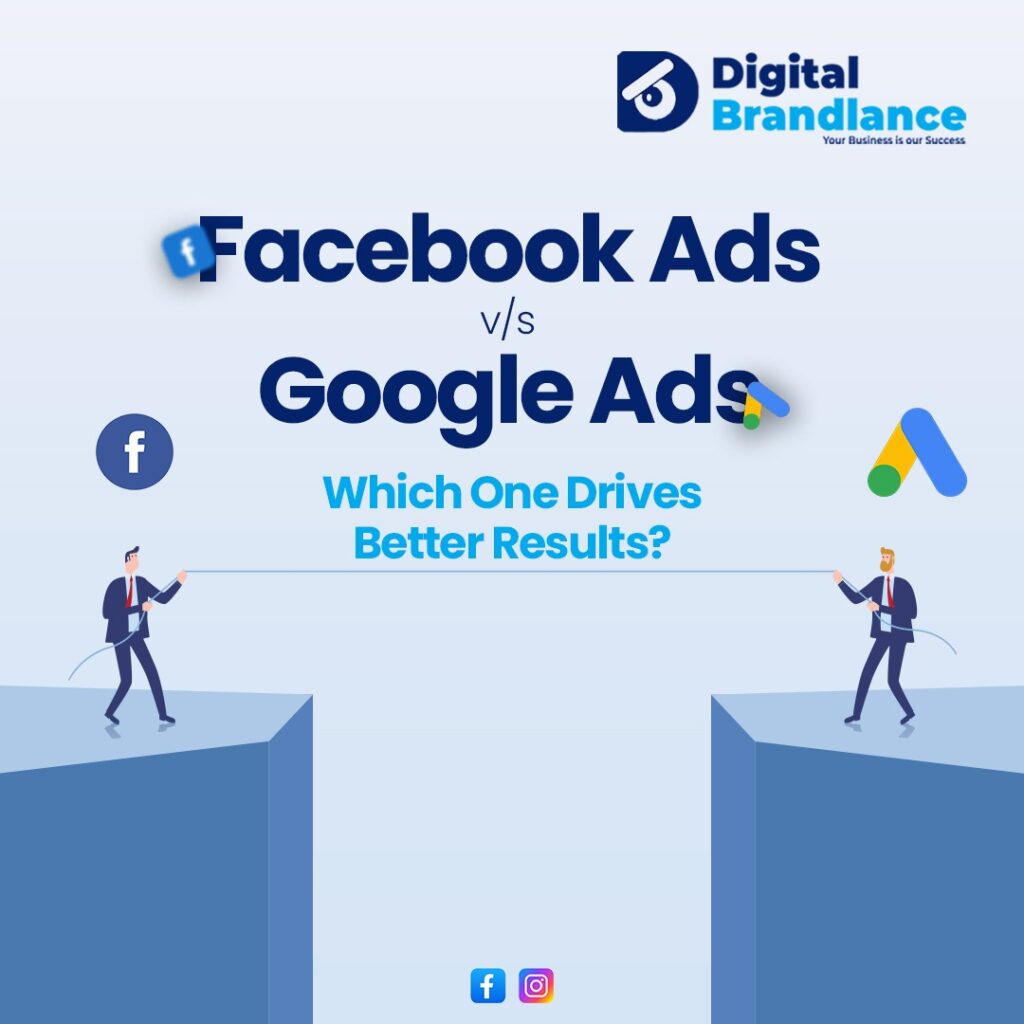
Both platforms dominate the digital advertising space but cater to different marketing goals. As Facebook Ads are ideal for building brand awareness and audience engagement, while Google Ads focus on capturing high-intent search traffic for direct conversions. Understanding the strengths of Facebook Ads vs. Google Ads can help businesses create a balanced strategy that maximizes reach, engagement, and ROI. we’ll break down their differences and how to leverage them effectively.
At Digital Brandlance, we specialize in crafting high-performing ad campaigns that not only bring immediate traffic but also enhance long-term search engine rankings. Let’s explore how Facebook Ads and Google Ads contribute to SEO and how Digital Brandlance can help you make the most of both.
How Facebook Ads Boost SEO Growth
Facebook Ads operate on an interest-based model, displaying ads to users based on their behavior, preferences, and demographic details. This makes Facebook an ideal platform for brands focusing on awareness, engagement, and lead nurturing before potential customers actively search for their products or services. With precise audience segmentation, businesses can increase visibility and connect with the right prospects at the right time.
At Digital Brandlance, we ensure your Facebook advertising efforts yield high engagement and conversions by implementing data-driven strategies: Advanced Audience Targeting – We analyze customer data and craft hyper-focused audience segments. Compelling Ad Creatives – Our team designs eye-catching visuals and persuasive ad copy to improve click-through rates (CTR). Performance Optimization – We continuously track, test, and refine campaigns for better ad spend efficiency and higher ROI.
Key Features
Psychographic Targeting: Reach audiences based on interests, hobbies, and online behaviors.
Geo-targeting: Advertise to local, national, or international audiences.
Demographic Targeting: Target users based on age, gender, education, and income.
Retargeting: Engage previous visitors to encourage return visits and conversions.
Custom Audiences: Expand reach by targeting lookalike audiences similar to existing customers.
Google Ads: Capturing High-Intent Search Traffic
Unlike Facebook Ads, Google Ads are intent-driven, meaning they target users who are actively searching for specific products or services. This makes Google Ads an excellent tool for lead generation and direct conversions, as businesses can position themselves at the top of search results when potential customers are ready to purchase.
At Digital Brandlance, we specialize in creating high-performing Google Ads campaigns that maximize visibility, traffic, and conversions: In-Depth Keyword Research – We identify high-value keywords to reduce ad costs and improve conversion rates. Optimized Ad Copy & Landing Pages – Our experts craft compelling ad content and user-friendly landing pages to boost CTR. ROI-Focused Campaign Management – We use real-time analytics and A/B testing to continuously enhance performance.
Key Features
Keyword Targeting: Reach users searching for specific products or services.
Geo-targeting: Focus campaigns on local, national, or global audiences.
Customer Match: Retarget existing customers using their search and browsing history.
Retargeting: Show ads to users who have interacted with your website or business before.
Demographic Targeting: Define your audience based on age, gender, and online behaviors.
Conclusion
Facebook Ads vs Google Ads offer unique benefits—Facebook Ads drive brand awareness and engagement, while Google Ads capture high-intent search traffic for conversions. A hybrid approach ensures maximum results by attracting, nurturing, and converting customers efficiently.
At Digital Brandlance, we craft data-driven ad strategies to boost visibility, traffic, and ROI. Whether you need high-impact Facebook Ads or conversion-focused Google Ads, we’ve got you covered.
💡 Ready to grow? Contact Digital Brandlance today! 🚀



